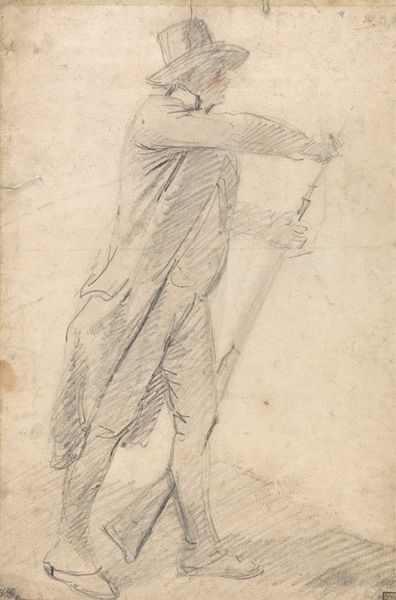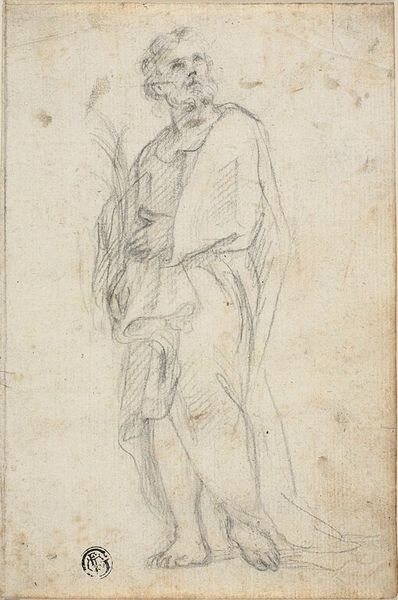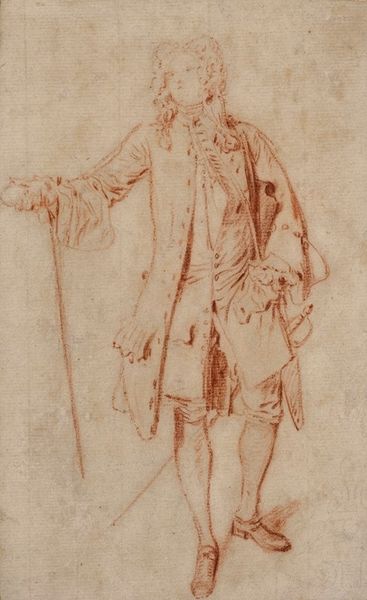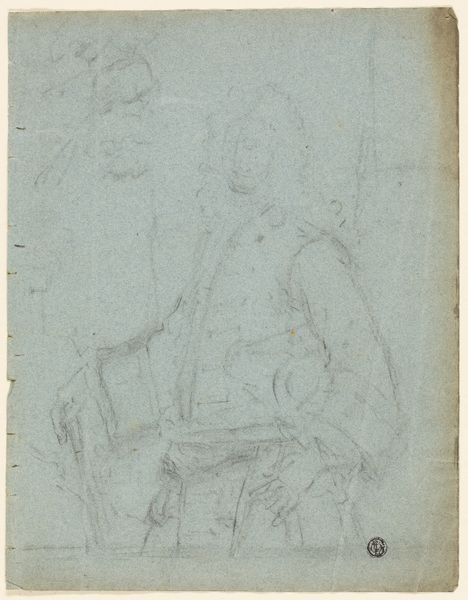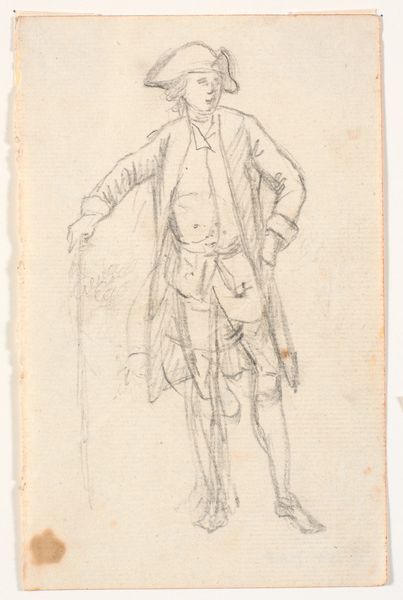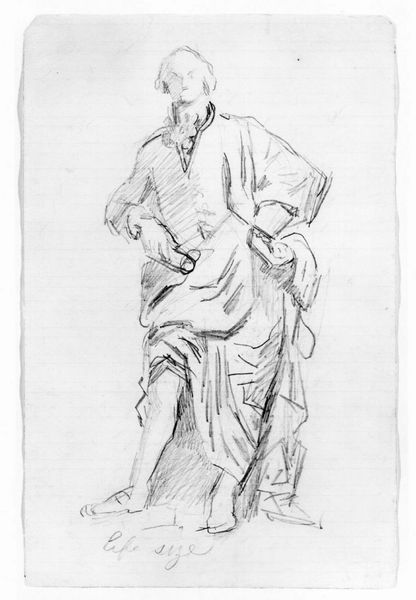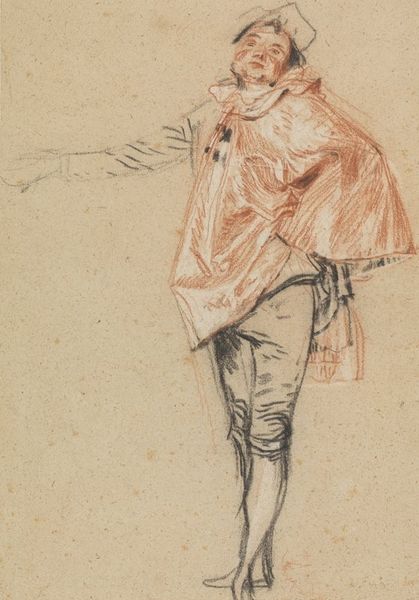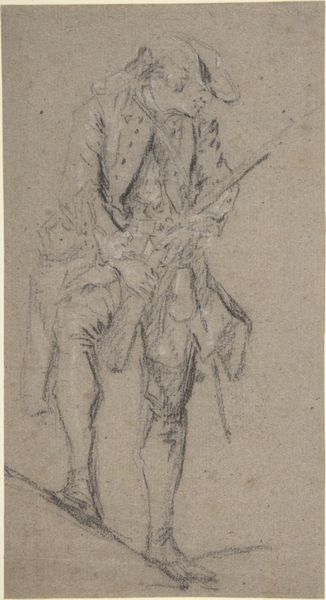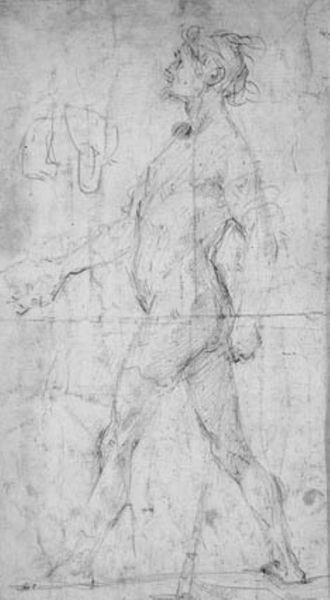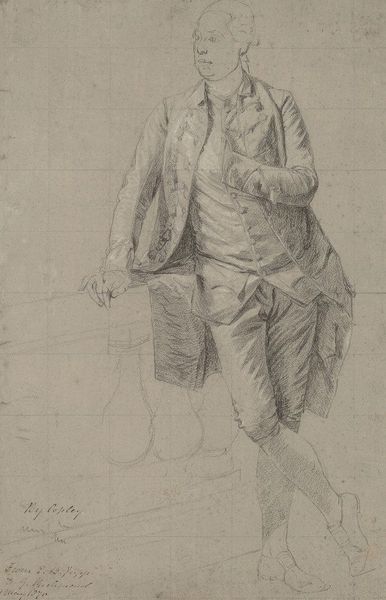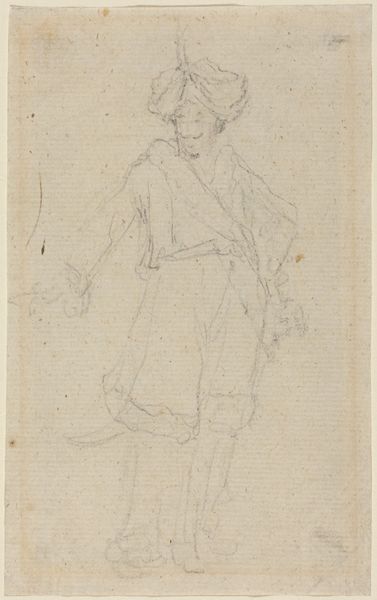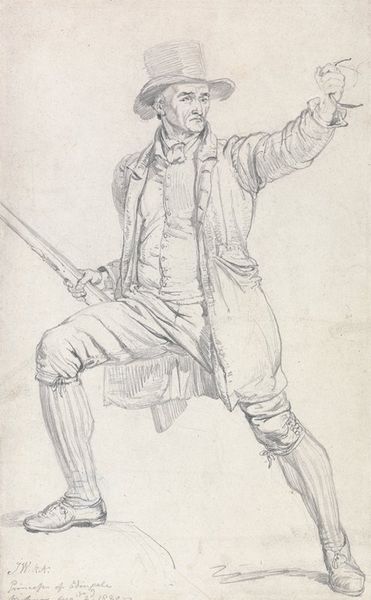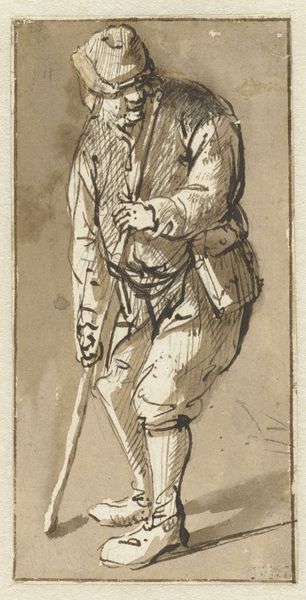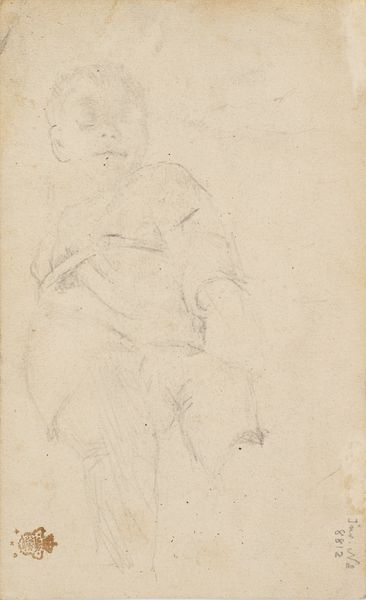
drawing, pencil
#
portrait
#
drawing
#
pencil sketch
#
charcoal drawing
#
figuration
#
pencil
#
italian-renaissance
Dimensions: 345 mm (height) x 235 mm (width) (bladmaal)
Curator: This is a pencil drawing entitled "Seated young man with a cane," created by Lorenzo Lippi, sometime between 1606 and 1665. What do you make of this drawing? Editor: It's stark. A little haunting, even. There's a vulnerability in the sketchiness, like a half-remembered dream. The figure feels incomplete, poised between presence and absence. Curator: It’s interesting you say haunting, because Lippi worked primarily as a painter, specifically of portraits. This drawing allows us a unique view into the artistic process. He wasn’t striving for formal portraiture. Editor: I agree. It feels almost anatomical in its study. The angles of the leg and the fall of the clothing over the arm read like notations more than declarations. Did he perhaps produce preparatory drawings for other works? Curator: Precisely. The State Museum of Art believes the artwork is a preparatory drawing of the artwork "Tobias Healing His Father’s Blindness" conserved in the Liechtenstein Collection. It tells a lot about the Italian Renaissance focus on accuracy. Editor: The way the cane bisects the composition is so striking, both supporting the figure and visually dividing him. Do you see symbolism there? A representation of life choices, a burden perhaps? Curator: Maybe, or maybe it's just there to add a visual element and balance the drawing. Either way, there's a tension between what we think we know about Lippi’s historical context and what this particular work communicates. It seems to ask: can the rough draft ever be more profound than the polished canvas? Is an artist even aware of it during his creation process? Editor: It makes you consider how access changes things. A sketch offers a unique window into an artist’s creative process, demystifying it in a way. So, yeah, what exactly is he looking for? Curator: Looking at art through the lens of access and influence, where we encounter it really does shift the work's meaning and cultural value. That pencil work, it feels special. Editor: Ultimately, "Seated young man with a cane" remains captivating due to its subtle power—a testament to Lippi's artistry, drawing us in through suggestion and the echo of creative curiosity.
Comments
No comments
Be the first to comment and join the conversation on the ultimate creative platform.
